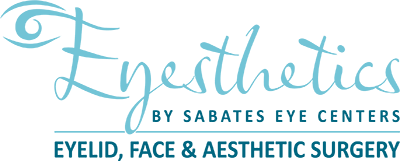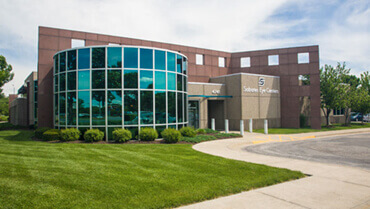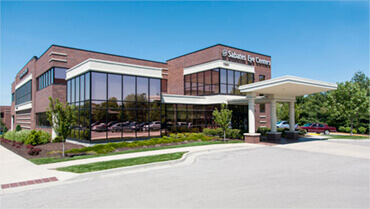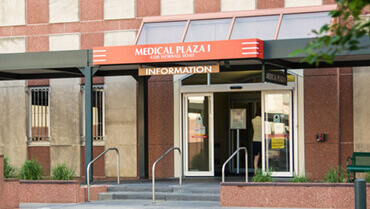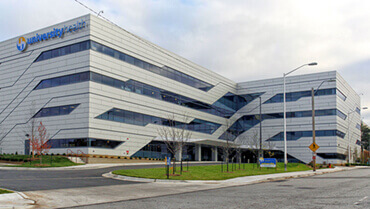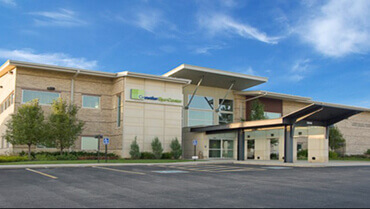Home » Reconstruction
Reconstruction
Restoring Vision With Oculofacial Plastic & Reconstructive Surgery
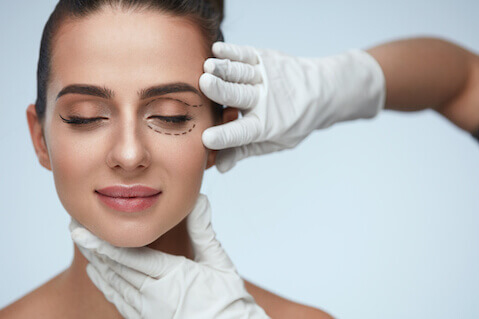
What is “oculoplastic” surgery? Is it plastic surgery? Yes, and it can be either cosmetic or reconstructive. General plastic surgeons are trained to perform a variety of procedures across the body. Oculoplastic surgeons specialize in treating everything on and around the eyelids.
Is your vision compromised? Explore reconstructive options with a consultation.
While cosmetic procedures are performed solely to improve appearance, reconstructive surgery is medically necessary to restore impaired visual function and is usually covered by health insurance. At Eyesthetics Eyelid, Face and Aesthetic Surgery, patients of all ages undergo oculoplastic surgery to treat abnormalities of the eyelids and face, the lacrimal (tear duct) system and the orbit.
Eyelids are complex structures that can droop, retract from the eye, or turn inward and outward. Eyelid malposition can be caused by aging, injury or disease.
When lids are positioned incorrectly, the eye is not properly protected and lubricated. This can lead to dryness, discomfort, corneal ulcers and infections and also blocked tear ducts. Drooping lids can also compromise vision.
In many cases of eyelid malposition, our surgeons are able to treat the condition by tightening, loosening or repairing the tendons that hold the lid in place. Blepharoplasty on the upper lids can remove the excess skin and fat that leads to blocked peripheral vision in many patients.
COMMON EYELID SURGERIES:
Upper and Lower Blepharoplasty
Upper eyelid blepharoplasty is a surgical procedure that removes excess skin and fat in the upper eyelids. The excess skin may interfere with vision or result in eyelid fatigue. An incision is made in the natural crease of the eye and skin, muscle, and fat are removed.
Lower eyelid blepharoplasty is a surgical procedure that removes excess skin, muscle and fat from the lower eyelids. The lower eyelids may become droopy with the appearance of “bags” under the eyelids. A lower eyelid blepharoplasty is directed at removing the excess skin, muscle, and fat through a skin incision below the eyelid margin. The fat may be removed through an incision inside of the lower eyelid without the need for a skin incision.
Ptosis Repair (drooping eyelid)
Ptosis (pronounced “toe-sis”) is the medical term for drooping of the upper eyelid(s). This lowering of the upper eyelid margin may cause a reduction in the field of vision when the eyelid either partially or completely obstructs the pupil. Patients with ptosis often have difficulty keeping their eyelids open.
The usual cause of eyelid drooping is a loosening or stretching of the muscle and tendon that serve to elevate the eyelid. Surgical repair is directed to reattach or shorten the stretched muscle or tendon. The primary goal of ptosis surgery is to elevate the upper eyelid to restore a normal field of vision.
Ectropion (eyelid turning out)
Ectropion (ek-trō-pē-än) is a condition in which the lower eyelid is “rolled out” away from the eye, or is sagging away from the eye. The sagging lower eyelid leaves the eye exposed and dry. If ectropion is not treated, the condition can lead to chronic tearing, eye irritation, redness, pain, a gritty feeling, crusting of the eyelid, mucous discharge, and breakdown of the cornea due to exposure.
Entropion (eyelid turning in)
Entropion (en- trō- pē- än) is a condition in which the eyelid is rolled inward toward the eye. It can occur as a result of advancing age and weakening of certain eyelid muscles. A turned-in eyelid rubs against the eye, making it red, irritated, painful, and sensitive to light and wind. If it is not treated, the condition can lead to excessive tearing, mucous discharge and scratching or scarring of the cornea. A chronically turned-in eyelid can result in acute sensitivity to light and may lead to eye infections, corneal abrasions, or corneal ulcers.
Tumor Repair
The eyelid skin is the thinnest and most sensitive skin on your body. As a result, this is often the first area on your face to show change from sun damage and aging. Unfortunately, sun damage and other environmental toxins not only cause the skin to age but also can cause serious damage. Skin cancer of the eyelids is relatively common and several types exist. The presence of a nodule or lesion on the eyelid that grows, bleeds, or ulcerates should be evaluated. This involves examination and, sometimes, a biopsy.
Any suspicious areas need to be evaluated and may require a biopsy to confirm the diagnosis of a skin cancer. Treatment of eyelid skin cancer involves the complete removal of the tumor followed by reconstruction of the eyelid. Complete removal of eyelid cancer is important to minimize the likelihood of a recurrence or spread of the cancer. The oculoplastic surgeon may remove the tumor and have the pathologist check the tissue margins and frozen sections, to be sure that the tumor is completely removed.
Another method involves a dermatologic surgeon excising the tumor, using Mohs’ technique, to ensure the total removal of the cancer. After the cancer has been completely removed, reconstructive surgery by an oculoplastic surgeon is usually necessary to preserve the function of the eyelid and obtain the best cosmetic appearance possible.
Often the cause of bulging of one or both eyes, it is associated with autoimmune thyroid disorders, most commonly Graves’ disease, and may lead to a loss of vision, double vision, orbital pain, ocular redness and irritation, and dry eye symptoms.
Corrective surgery can include orbital decompression to restore normal eye position and relieve pressure, eye muscle surgery for double vision, and eyelid surgery to normalize lid position. Patients may need one, two or all three types of procedures, or none at all, depending upon the severity of the disease.
Eyelid Symptoms
Blepharitis is a very common problem. It is characterized by a chronic inflammation of the eyelids that irritates the eyes. Typically, it is not a vision-threatening problem, but can be very bothersome. Symptoms can include redness, burning, feeling of dryness, tearing, sandy-gritty sensations, feelings that there is something in the eye, and many other symptoms caused by the irritation to the surface of the eye. The problem is chronic and cannot be cured but can be controlled through diligent maintenance treatment by the patient.
There are different variations of blepharitis. Your treatment will be tailored by your doctor according to your needs. Mostly blepharitis is due to inflammation and clogging of the meibomian glands, which are oil glands found on the upper and lower eyelids. The oil from these glands forms an integral part of the tear film and is necessary for the lubrication of the eyes. When these glands are inflamed, the oil in the tear film decreases and the eyes can become dry.
The treatment and control of blepharitis has a stepwise approach to keeping the eyelids clean. Cleaning the dirt and debris from the lids and lashes and reducing the bacteria from this area will improve symptoms. The goal is to gently clean the eyelids. Being too aggressive can cause more eyelid irritation. The basic steps are outlined below. You can tailor these basic steps according to how much your symptoms improve or worsen. Blepharitis typically has a fluctuating, up and down course.
Your symptoms likely will not improve immediately. You should stay diligent, however, because the improvement will only take place over a period of weeks and continue over weeks or months. If you stop the treatment, your symptoms can return, as this is a chronic condition that requires long-term management.
Warm Compresses
The goal of the warm compresses is to liquify and loosen the oil in the Meibomian glands, allowing it to reach the tear film. There are several ways of applying heat to your eyelids, the goal is to apply heat for 3-5 minutes at least once per day. One option is to wet a clean washcloth with hot water and wring it out until somewhat dry. After removal of eye make-up, place the washcloth over your closed eyes, and wet the washcloth again as often as needed so it stays hot.
Another option is using a store-bought heat mask which can be warmed in the microwave, please be careful to test the temperature in order to avoid getting burned. Some heat masks are battery run or can be plugged in.
Eyelid Scrubs, Cleansers and Spray
In some cases, baby shampoo can be used to clean the eyelids after applying the warm compresses. Dilute the shampoo with some water. Gently clean the eyelids using one of the following: fingertips, a washcloth, cotton pads or cotton balls. (Patients should find the choice is best for their eyes.) Keep the eyelids closed and wash along the edges of the eyelids. Rinse the soap when finished. Name brand Johnsons’ Baby Shampoo is recommended because it is very gentle and least likely to cause irritation. Cleaning with baby shampoo can be performed once or twice a day, depending on the severity of your symptoms.
There are many different commercially available lid scrubs and cleansers that can be used instead of baby shampoo. Follow the instructions on the box for each product; the best moment to perform eyelid cleansing is after the warm compresses. It is important to avoid vigorous scrubbing as this can cause increased inflammation.
Eyelid sprays are frequently used instead of scrubs. The primary component is hypochlorous acid, which is an over the counter medication that can help decrease inflammation of the meibomian glands. Avenova and Hypochlor are some name brand examples. After removal of eye make-up and warm compresses, spray the solution onto closed eyelids. Then spread it onto your eyelashes lightly using a clean fingertip and let it dry. After it is dry, you can apply your usual moisturizing products. We recommend using the spray twice per day (morning and night).
Antibiotics
Your ophthalmologist may have you use antibiotics in the treatment of blepharitis. These can be prescribed orally, or as a topical ointment or drop. If you are prescribed an ointment, please put a small amount of ointment on a clean fingertip, and gently apply to the base of your eyelashes. Do this as many times a day as recommended by your doctor. If prescribed an oral antibiotic, please take with foods.
Eye Drops
Artificial tears are always helpful in the treatment of blepharitis, as this entity generally causes dry eyes. These drops are sold over the counter. There are many different brands, some with or without preservatives. Please discuss with your doctor to determine which artificial tears are best for you.
Your doctor may also prescribe topical medications, or a short course of steroids designed to decrease inflammation and improve blepharitis and dry eye symptoms.
Office-Based Procedures
There are several procedures that can be performed in clinic that may be helpful in the treatment of blepharitis. They are mostly designed to express the oil out of the meibomian glands. This can be done manually or using a device called LipiFlow, which is designed to safely heat the palpebral surfaces of the upper and lower eyelids while simultaneously applying graded pulsatile pressure to the outer eyelid surfaces, analogous to a “deep cleaning” performed at the dentist. You would need to be referred to a specialized dry eye clinic to determine if these procedures are an option for you.
Double eyelid surgery, known more formally as Asian blepharoplasty, is a procedure in which an upper-eyelid crease is created. This is often done for those of Asian descent who may not have a visible crease but who desire one.
